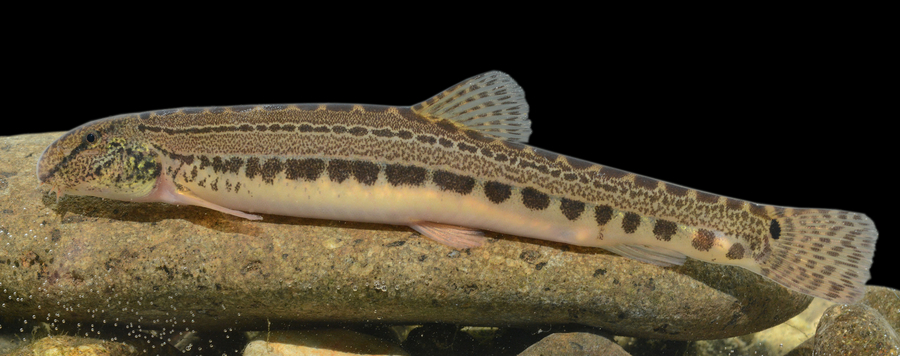
Review of the genus Cobitis in the Middle East, with the description of eight new species
The diversity of Cobitis in the Middle East is reviewed, resulting in the recognition of 30 species, of which eight are described herein as new. Two species, C. amphilekta and C. kellei, seem to be extinct. Hypotheses on species-level diversity derived from distance and Poisson tree process analyses of DNA barcode data are tested against morphometric and morphological characters including colour patterns. For species pairs separated by small K2P distances in COI sequence data we follow a practitioner-oriented diagnostic species concept, in which we recognise species only if differentiated morphologically (including by colour pattern). For all 30 species we provide diagnoses and identification keys. Cobitis afifeae, new species, from the Büyük Menderes River drainage in the Aegean Sea basin, is distinguished by having two laminae circularis in the male, a row of blotches below Z4, a small, roundish or comma-shaped black spot at the upper caudal-fin base, and elevated mental lobes. Cobitis aliyeae, new species, from the lower Seyhan and Ceyhan River drainages, is distinguished by having two laminae circularis in the male, the blotches in Z2 and Z4 anterior to the dorsal-fin origin usually well separated from each other, and the pigmentation in Z1 well distinguished from the pigmentation in Z2. Cobitis anabelae, new species, from the lower Orontes River drainage, is distinguished by having two laminae circularis in the male, the pigmentation in Z2 formed by small, brown spots, always much smaller than blotches in Z3, much smaller than the pupil diameter, Z2 and Z3 well separated, and no pigmentation below Z4. Cobitis erkakanae, new species, from the Gölbasi Lakes, adjacent to the Ceyhan River drainage, is distinguished by having two laminae circularis in the male, no blotches below Z4, the blotches in Z2 and Z4 being horizontally elongated and often fused with adjacent ones, and the caudal fin with 4–6 wide, regularly-shaped, brown bands. Cobitis emrei, new species, from the Lake Sapanca basin is distinguished by having one lamina circularis in the male, a large black spot at the upper caudal-fin base, and Z3 fully covered by very small spots forming a sand-like pattern. Cobitis joergbohleni, new species, from the Sultan marshes in Central Anatolia is distinguished by having two laminae circularis in the male, and the flank colour pattern being completely disorganised, not following the Gambetta zones. Cobitis pirii, new species, from the endorheic Lake Eğirdir basin and the Mediterranean Aksu and Köprü Rivers, is distinguished by having two laminae circularis in the male, a simple external part of the suborbital spine and two distinct rows of small blotches in Z4, one along the lateral midline and one distinctly below. Cobitis troasensis, new species, from the Tuzla River drainage, is distinguished by having one lamina circularis in the male and 25–36 small, comma-shaped brown blotches in Z4. A lectotype is designated for Cobitis battalgilae. As First Revisers, priority is given to Cobitis fahireae over C. kurui. Cobitis damlae and C. kurui are treated as synonyms of C. fahireae. Cobitis strumicae and C. taenia are recorded for the first time from Anatolia and C. saniae is newly documented from the Black Sea basin in Georgia. The Poisson tree process analysis of COI data proposed 31 groups, most of which could be distinguished by morphological characters. Cobitis troasensis is described based on morphological data alone.






